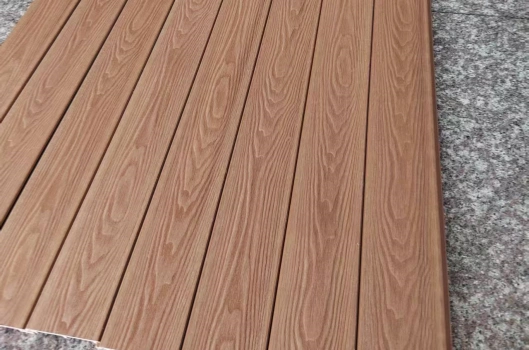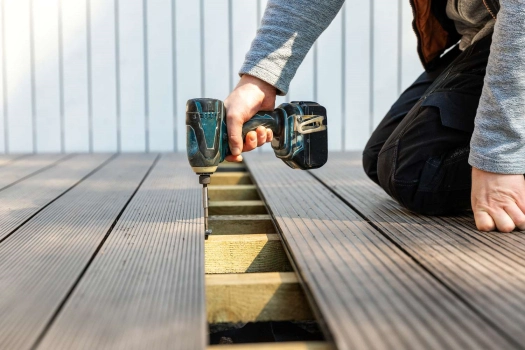Partition Walls, Ideal for Interior Decoration
Partition walls play a vital role in shaping the functionality and aesthetics of interior spaces. From residential to office and commercial environments, partition walls provide flexibility, privacy and soundproofing without bearing the weight of the building.
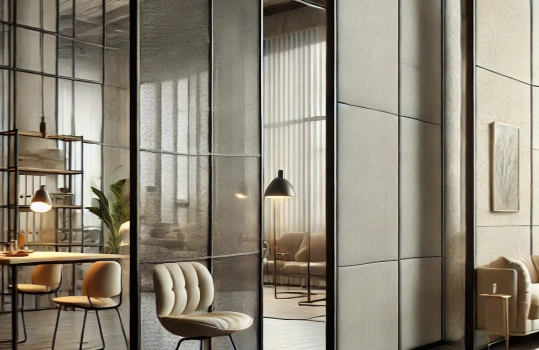
Table of Contents
1. What is a Partition Wall?
A partition wall is a non-load bearing wall used to divide a larger space into smaller functional areas. Unlike a load-bearing wall, it does not support the structure of the building, but is used purely for space division and interior design. Partition walls are commonly used in residential and commercial environments to:
Divide space: create separate rooms or sections within a larger area.
Ensure Privacy: Block views and minimize distractions.
Provide Acoustic Insulation: Minimize the transmission of noise between rooms.
These walls help to increase the flexibility of a building's layout, allowing space to be reconfigured as needs change. For example, a large office can be divided into separate workstations, or an open-plan living room can be separated from a dining area.
2. Common Types of Partition Walls
Partition walls can be constructed using a variety of materials, each suited to different requirements. The following is an overview of the most commonly used types:
Lightweight partition walls:
Constructed from plasterboard, timber or metal framing, these partition walls are lightweight and easy to install.
Ideal for spaces that may need to be reconfigured in the future, such as offices or retail stores, where flexibility in layout is important.
They are not as durable, but offer a cost-effective solution for non-permanent or temporary partitions.
Brick Partition Walls:
Made of brick or concrete, brick walls are heavier and more permanent.
They offer excellent soundproofing and fire resistance and are suitable for homes, schools or hospitals where long-term durability is important.
The downside is that brick walls are difficult to move or alter after installation, making them less flexible for spaces that may need to be changed.
Glass Partition Walls:
Often found in modern office environments, glass partition walls are transparent or translucent, allowing for light while maintaining separate spaces.
These walls can enhance the sense of openness and make a space feel larger and brighter.
Glass partitions are aesthetically pleasing, but privacy is limited unless frosted or tinted glass is used. Glass partitions are also prone to damage and need to be handled with care.
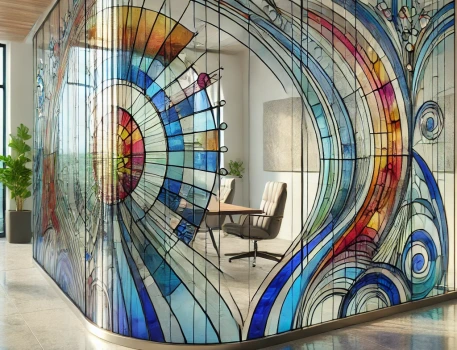
Mobile Partition Walls:
This is a temporary partition wall that can be easily moved, usually mounted on rails or wheels.
It is ideal for places where the layout changes frequently, such as meeting rooms, exhibition halls or event venues.
Mobile partition walls are lightweight and easy to reconfigure, but may not be as stable or soundproof as permanent partition walls.
3. What's The Difference Between Drywall And Partition Wall?
Before diving deeper into partition wall materials, it’s important to address a common point of confusion: the difference between drywall and partition walls. Though both are used in interior construction, they serve distinct purposes.
Drywall (also known as gypsum board) is a panel made of gypsum, commonly used to create smooth wall and ceiling surfaces. It’s lightweight and easy to install but primarily functions as a surface finish rather than a space-dividing element. Drywall is fixed to wooden or metal studs and, while it can be used in the construction of partition walls, its purpose is more focused on providing a solid surface that can be painted or treated.
In contrast, partition walls are specifically designed to divide larger spaces into smaller, functional zones without supporting the structural load of a building. They can be made from a variety of materials, including drywall, but also from glass, brick, timber, or more modern options like WPC (Wood-Plastic Composite). Partition walls provide more flexibility and versatility in reconfiguring spaces, especially in offices or commercial settings, where mobility or temporary installation is important.
In summary, drywall is often a component used in the construction of partition walls, but partition walls as a category offer far more options in terms of material, functionality, and flexibility.
4. Comparison of Common Partition Wall Materials
Material is a key factor when choosing a partition wall. Here is a comparison of commonly used materials:
Gypsum board:
Pros: Lightweight, low cost, easy to install.
Cons: Easily damaged in high humidity environments such as bathrooms or kitchens. It also lacks soundproofing and the strength needed for long-term durability.
Glass:
Pros: Allows natural light to flow through the space, creating a modern and visually appealing environment. Ideal for open-plan offices or spaces with high visibility requirements.
Cons: Less effective for privacy without treatments such as frosting or tinting, and glass is fragile and requires careful installation and maintenance.
Brick Walls
Pros Offers excellent soundproofing, fire resistance and durability. Once installed, brick partitions are incredibly sturdy.
Cons: Bulky and difficult to install. Due to the permanent nature of brick walls, they are not suitable for spaces where the layout may need to be changed in the future.
Wood:
Pros Has a warm, natural aesthetic and is relatively easy to work with. Wood walls can be styled and customized to fit the design style.
Cons: Poor fire and moisture resistance, making it less suitable for high humidity environments or areas with high fire safety requirements.
5. WPC Partition Wall (Wood-Plastic Composite Hollow Tube)
WPC is a modern alternative to traditional partition materials that combines the best qualities of wood and plastic. It is an innovative and eco-friendly material made from wood fibers mixed with plastic for durability and sustainability. Here are some of the reasons why WPC hollow tube is a great choice for partition walls:
Durability: WPC is water, moisture, insect and rot resistant. This makes it a great choice for both indoor and outdoor use, where environmental exposure is a concern.
Eco-friendly: Since WPC is made from recycled materials, it is an environmentally responsible choice that helps to reduce the consumption of natural wood and the production of plastic waste.
Lightweight Construction: WPC hollow tubes are designed to be lightweight and easy to handle, simplifying the installation process and allowing for greater flexibility in a variety of spaces.
Aesthetics: WPC has the look of natural wood, but is more versatile and customizable. Its shapes and styles can be adapted to modern and minimalist interiors while maintaining the warmth of wood.
Low Maintenance: Unlike traditional wood, WPC requires minimal maintenance. It does not require regular sealing or treatment to maintain its appearance or durability, making it increasingly cost-effective over time.
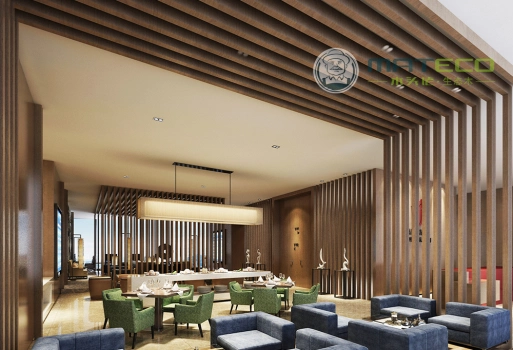
6. WPC Partition Wall Applications
Wood plastic partition walls are suitable for a variety of uses:
Interior Spaces:
Wood plastic hollow tubes can be used to create stylish, durable partitions in commercial spaces such as offices, living rooms, dining rooms, and even restaurants. They provide a balance between dividing space and maintaining a sense of openness.
Outdoor Spaces:
Thanks to its weather-resistant properties, WPC flooring is also ideal for outdoor partitions in gardens, patios or balconies. It can withstand sun and rain without warping or deteriorating like traditional wood.
Potential drawbacks:
Higher cost: WPC is generally more expensive than materials such as plasterboard or wood, but its durability and low maintenance costs make it a better investment in the long run.
Non-load-bearing: WPC is only suitable for non-load-bearing partitions because it does not have the structural strength needed to support the weight of the building.
7. Suggestions and Applications
Consider the specific needs of the room when choosing the right partition for your space:
1) Office: using glass or lightweight partitions creates an open, collaborative atmosphere, while still keeping the space airy and utilizing natural light.
2) Residential spaces: Brick or wood partitions are ideal for residential environments, providing privacy and durability to create a quiet, comfortable living space.
3) Living rooms, hallways: WPC can be used to create decorative partitions that are both aesthetically pleasing and texturally appealing due to its natural wood grain appearance, as well as its durability and ease of maintenance.
4) Public or flexible spaces: For spaces that require frequent layout changes, consider using a movable partition wall that facilitates rapid reconfiguration of the space and does not require permanent installation, enhancing the flexibility of space use.
8. Conclusion
Partition walls are versatile and functional elements in interior design, providing privacy, sound insulation, and flexibility. While traditional materials like gypsum board, brick, and glass remain popular, WPC hollow tubes offer a modern, eco-friendly alternative. WPC combines the best features of wood and plastic, providing durability, easy installation, and a natural aesthetic. Whether you need partitions for indoor or outdoor spaces, choosing the right material can enhance both the functionality and beauty of your environment.
If you are looking for a WPC manufacturer, MATECO will be your best choice.
Website: https://www.matecowpc.com
WhatsApp: +86-13380085620
Email: info@matecowpc.com





